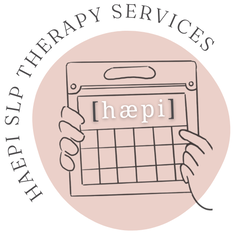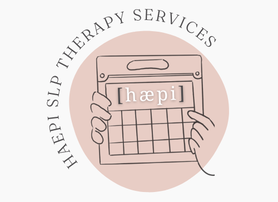|
Let's talk pronoun reversal in gestalt language processors.
As a parent, you may have wondered why your child always seems to confuse "I" and "you"? As an SLP, you maybe have wondered, how do we target this? When we understand that our GLPs are picking up verbatim utterances from adult models that they have attached meaning to (as their gestalts), it makes a lot of sense! When we honour and understand these utterances without trying to change them, and instead change how WE model language, that's when we will see a shift happen. We can expect NOT to see kids began to tease apart these pronouns on their own until stages 3-4, so we don't want to rush it. Instead, focus on modelling from the child's perspective or a joint perspective (e.g., "we are ____"; "let's go _____"). Have questions about pronoun reversal in GLPs? Drop them below! by Halle Demchuk, SLPPaediatric SLP | GLP-Trained Clinician | Owner of HAEPI SLP
Our gestalt language processors' first step in their language development is acquiring verbatim scripts or phrases that are meaningful to them, and using them spontaneously later in other contexts (this is referred to as "delayed echolalia" or using "gestalts").
The great thing is that our GLPs will acquire phrases when they are modelled naturally, but there are a few considerations we should keep in mind, such as:
The shift from modelling "survival language" (sentence strips, single words, labelling) can feel like a big one, but your GLP will develop more flexible language if we meet them where they are at as gestalt language processors. by Halle Demchuk, SLPPaediatric SLP | GLP-Trained Clinician | Owner of HAEPI SLP
I think this clip demonstrates a few things we really strive for at HAEPI SLP: following the child's lead, embracing all play, and modelling without expectation both on AAC and verbal phrases for gestalt language processors.
The @gestaltgoodness cards shown were also a great addition - my kiddo loved listening to the child model via the QR code. Usually I stay completely away from flash cards with GLPs, but these ones are designed for the communication partners (not necessarily the child), so WE can remember to model naturally in play, and use easily mitigable phrases across contexts. I also loved introducing the cards to school staff to further explain how we can model (!!!), because it takes a while to become natural for anyone new to GLP! *I received these First Phrases cards as a gift, with no expectation to review. Just love them that much!* by Halle Demchuk, SLPPaediatric SLP | GLP-Trained Clinician | Owner of HAEPI SLP
When mitigating in Stage 2 of Natural Language Acquisition, we want to use a Stage 1 gestalt that a child already has and alter it.
This can look like fitting different endings/beginnings within existing "frames," or shortening existing gestalts. Wondering what this looks like in action? Watch as Halle demonstrates in a mock play-based speech therapy session! Tune into our FREE 1-hour webinar on GLP for more info on Stage 2. Let us know in the comments if you found this helpful! by Halle Demchuk, SLPPaediatric SLP | GLP-Trained Clinician | Owner of HAEPI SLP We just dropped our new FREE handout on Declarative Language, available for download below and on our Resources page! Great for gestalt language processors and pathological demand avoidance profiles (and kids in general!), we've included examples for modelling and narrating for a variety of communicative functions. Let us know what you think! What handout should we develop next?
by Halle Demchuk, SLPPaediatric SLP | GLP-Trained Clinician | Owner of HAEPI SLP |
The HAEPI BlogCheck here for HAEPI updates, helpful SLP information, free resources, articles, and more!
Archives
June 2024
Categories
All
|
||||||
Empowering Happy Communicators |
get in touch |
Quick Links |
© HAEPI SLP THERAPY SERVICES.
HAEPI SLP Therapy Services is proudly neurodiverse, Indigenous-owned, and woman-operated.



